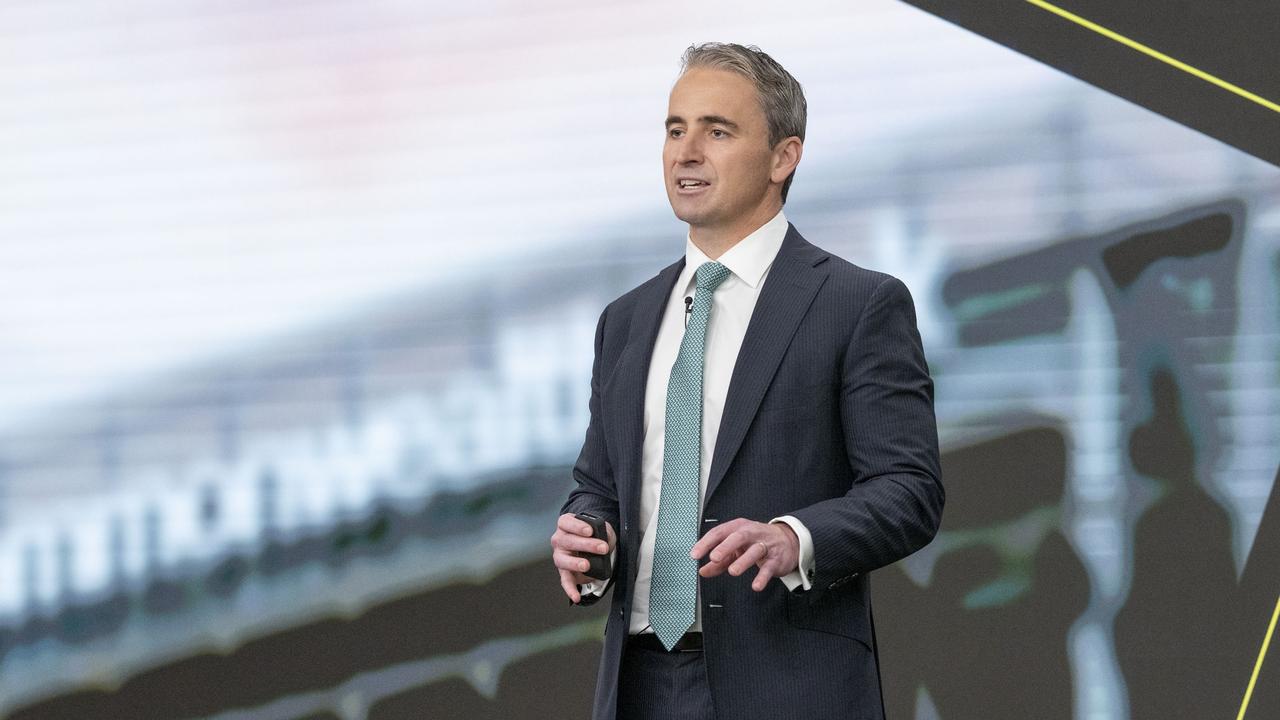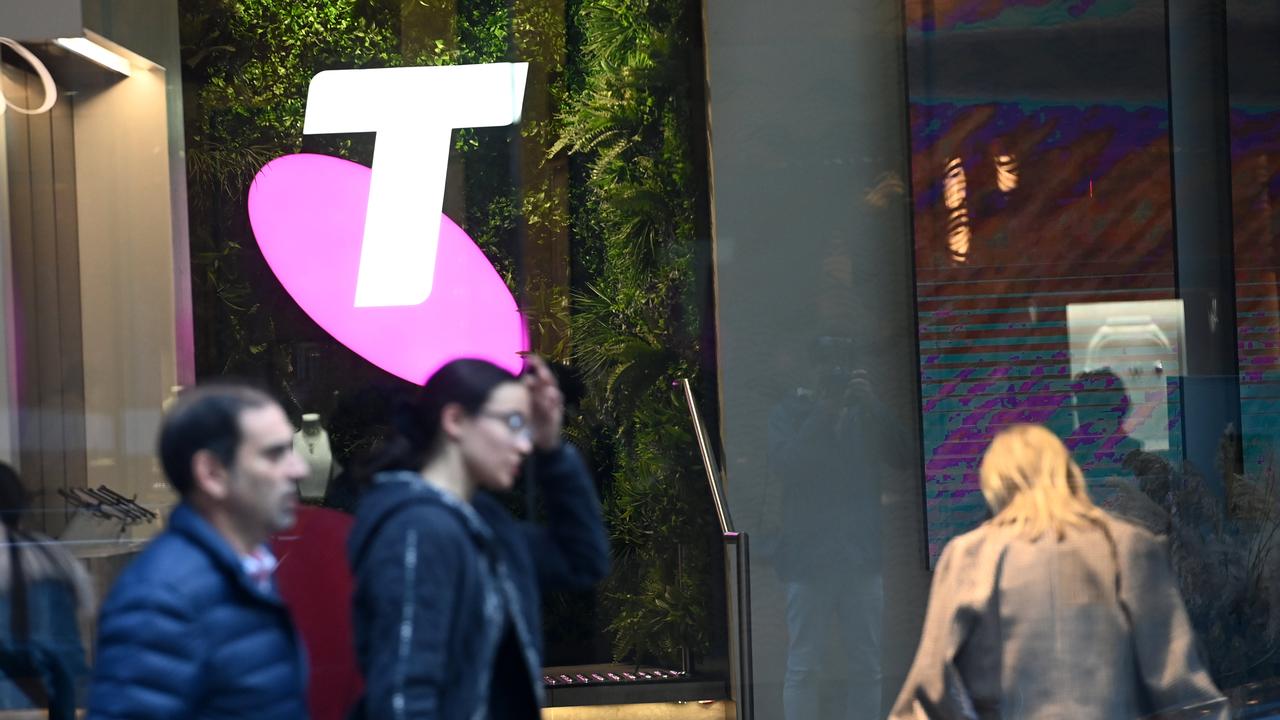‘Bewildering’: Why CBA is sitting out of lending war

As smaller rivals ANZ and Westpac are slugging it out for volume in a slowing mortgage market with discounts and cashbacks, Comyn declares this hotter part of the market is not for him.
“It’s bewildering,” Comyn tells The Australian.

The CBA boss points out the margin crunch revealed by ANZ in its full year accounts this week was “substantial”. Other big four banks suffering a margin squeeze have seen a share hit, he noted. CBA’s first quarter update shows the bank is slowing in mortgage market share. Where CBA was delivering growth of more than 5 per cent in recent quarters, it barely delivered 3 per cent growth in the September quarter.
“It’s very important to remember that margins are more important than volume,” Comyn says.
“Where we don’t think that (pricing) makes sense, then we’re prepared to participate less and wait to see how the market evolves and make sure that we’re maintaining a consistent and disciplined approach through this cycle”.
ANZ boss Shayne Elliott has said his bank’s 10 basis point margin compression followed “intense” competitive pressure in mortgages and a chase for deposits. CBA doesn’t disclose margins in its quarterly updates, but its full year results released in August showed the bank had a five basis point hit to margins during the June half.
Comyn pointed out that he also access to the lowest cost funding base in Australian banking through his deposit book. This gives him an advantage when it comes to managing interest margins, the full impact of this will play out as rivals refinance their funding book in coming years.
“A high quality deposit franchise is a lot more profitable in a higher interest rate environment and a lot more valuable,” Comyn notes.
CBA can be considered a barometer for the Australian economy, and with successive cash rate hikes things are clearly slowing in parts. The pace of mortgage market too is cooling from months, although business lending remains above double-digit growth rates. Quarterly cash net profit of $2.5bn was flat on the average of the past two quarters. Lending losses remain close to historic lows, but have drifted up in recent months.
Comyn confident that Australia is close to the top of the rate cycle.
“I think there’s a risk of a further rate hike, I wouldn’t have thought there was as probably less than 50 per cent. But I wouldn’t think there would be many more that could be contemplated above that”.
“I think the area where we’re all less confident about is following a significant increase in the cash rate, over the next 12 months – or let’s say over the next three years – when will the cash rate reduce? How many cash rate reductions? And what will we see going into 2025 and 2026?”
“How will that manifest in terms of the overall growth profile of the economy?,” he asks.
Resilience: Telstra’s new card
Telstra boss Vicki Brady has declared her national mobile and intercity cable network is planning to handle the explosion of data needed to run artificial intelligence and cloud computing over coming decades, as she positions her telco around trust, security and digitisation. The contrast could not have been more obvious.

Telstra’s investor day had been planned for months, but the message was clear. It took place less than a week after its main rival, the SingTel-owned Optus, suffered a massive network meltdown.
Optus services were offline for more than half the working day, showing how bad it gets when connectivity stops. In the process, it put millions of customers off-side and put it in the firing line of the government amid mutterings of critical infrastructure fines.
Optus is still quibbling with its customers about what went wrong and fair compensation for the outage, but Brady has taken the opportunity to showcase Telstra and in doing so talk up the “resilience and security” underpinning her network.
Brady’s main talking points to the market had been settled on weeks ago – well before the Optus drama. Areas like connectivity, digitisation, trust and security are the big themes that have already been shaping the telco. And this plays in a decision to substantially expand its fibre backbone connecting Australia’s big cities.
“You can’t underestimate the move to the cloud and how significant that is in driving demand for data,” Brady tells The Australian. “Then there’s advancements in we’re seeing in AI, and the sort of growth in demand in terms of the underlying infrastructure that we at Telstra have the opportunity to provide.”

Brady is aware that Telstra is no cleanskin on network reliability. In 2016, a string of outages almost cost the job of then chief executive Andy Penn, and the telco was forced to offer costly $25 credits to personal users and $50 for businesses caught out.
But the longer-term damage was around perceptions that Telstra was undercooking spending on its mobile network to preserve its juicy dividend stream.
Dividends have long since been re-based freeing up much needed investment. At the same time big re-engineering programs like Penn’s T22 restructure has released more cash. Brady also highlights Telstra has spent up big since that time, outlying more than $11bn, much of this is on new ultra-fast 5G technology.
Telstra is expected to be the biggest market share winner from the outages although Brady is determined to keep her staff in check.

“We take no pleasure in seeing another operator go through a massive outage. These are complex networks to run and you can never be immune from an outage,” she says.
“What is fundamental to us, though, is absolutely designing in the resilience, making sure when any big outages happen around the world we understand the lessons from that in the building.
“It’s fundamental in the way we design and the choices we make to invest and where we put that investment. But that doesn’t mean you’re guaranteed not to have outages”.
The outage represented a wake-up call for all operators.
“We’re now in an era where having your phone has become much more than just being able make calls or to watch videos for fun. It is so fundamental today, in terms of all the technology we rely on and I think Covid played a role in that shift to having to be able to interact and transact in that digital environment”.
“It’s so fundamental to the way we work economically and socially across the country”.
Data drive
The comments came as Brady outlined her vision for the telco she took charge of late last year, with data to drive growth for the coming decades.
Telstra’s role is clearly evolving from a mobile carrier where investment is huge and margins have been static. This sees Telstra planning to doubling down on intercity fibre and satellite broadband that puts it head-to-head with NBN’s network businesses.
Telstra’s dominant size limits is options for mobile expansion in Australia, meaning it needs to look for adjacencies from its core in order to generate revenue growth.
And here Brady believes the explosion of data needed to power AI is going to be a key future revenue streams.
Brady too called out digitisation as the shot in the arm needed for the Australian economy to revive flagging productivity.
“Underpinning all of that is the need to be connected. And that’s why investment in our mobile network, investment in our fibre assets, investment in our subsea cable network is absolutely critical,” Brady says.
The data drive is behind the $1.6bn decision to be spent over four years to expand its intercity fibre networks from five capital city routes already underway to 10. This includes connections across WA’s Pilbara region.

Future data demand from the likes of BHP, Rio Tinto and Fortescue will be immense as the mining majors automate their own operations with autonomous trucks, trains and on-site processing plants through Western Australia’s Pilbra region. The miners too are demanding low latency were calculations are made in milliseconds. This backs the business case to roll out a fibre network to remote parts of Australia. The new routes also connect Adelaide to Darwin and then on to Telstra-backed international networks via under sea cables.
Some of the spending too is earmarked for ground services for Telstra’s previously outlined partnership US satellite operator ViaSat which will see it offer satellite broadband directly to business and consumers across regional Australia. Telstra is also planning a satellite-to-handset service with trials to begin early next year with Elon Musk’s satellite company Starlink,
Satellite technology has the entire telco world buzzing particular LEO (low earth orbit) cluster satellites that offer higher capacity coverage. Brandy says satellites still have limitations can’t replace land based networks, but they technology can now deliver services to remote parts of Australia.
Brady says the LEO satellite space is evolving fast with more capacity and lower latency to be built into services over coming years. For a telco like Testra it was important to be moving early with operators.
“That’s why getting those partnerships and building relationships with providers gives you the ability built that level of trust and work together as things evolve”.
CBA’s Comyn sits out
johnstone@theaustralian.com.au





Sitting on top of the nation’s biggest bank, Commonwealth Bank’s Matt Comyn has some room to move when it comes to decisions around where he wants to play and areas to pull back from.